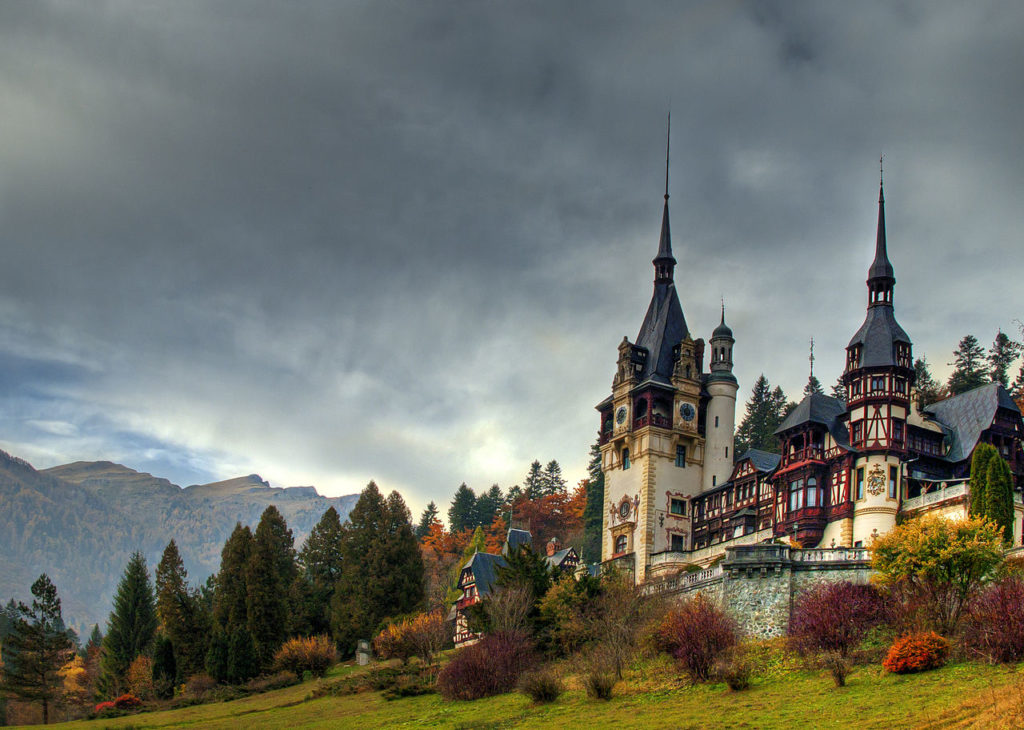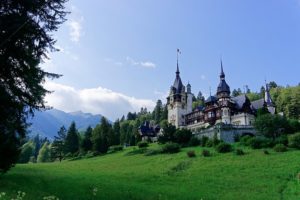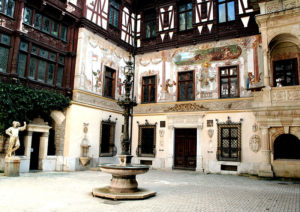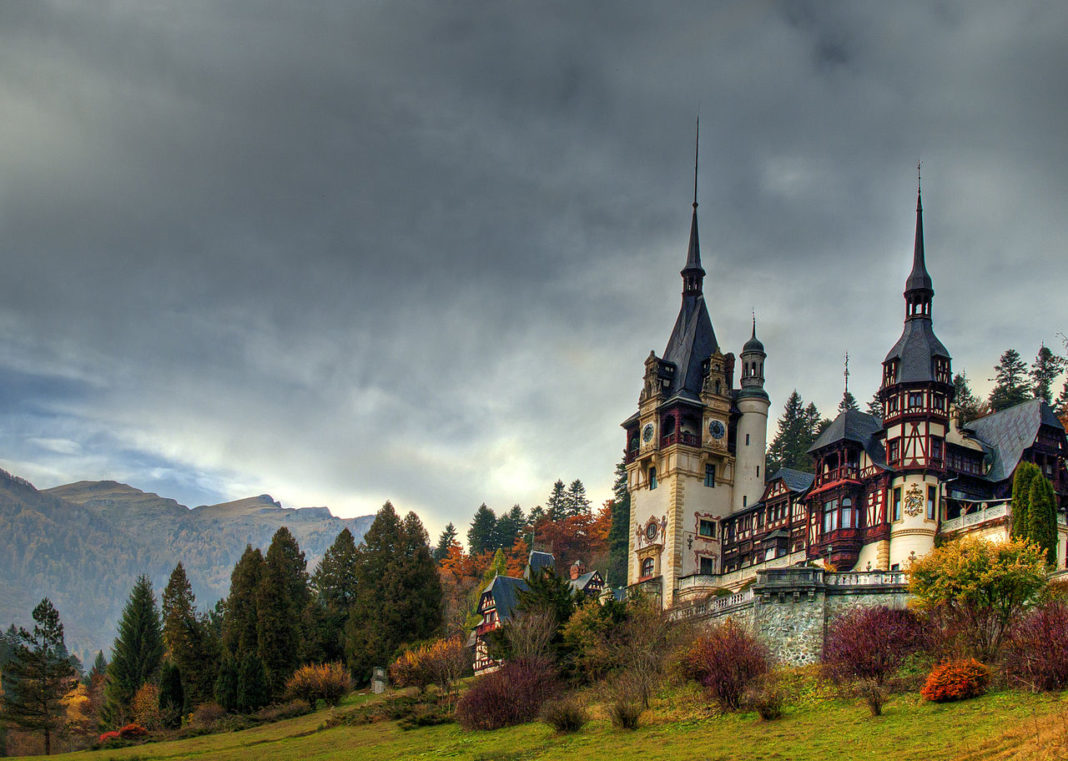The complex is northwest of the town of Sinaia, which is 48 kilometers from Brașov and 124 kilometers from Bucharest. In the southeastern Carpathian Mountains, the complex is composed of three monuments: Peleș Castle, Pelișor Castle, and the Foișor Hunting Lodge.

By form and function, Peleș is a palace, but it is consistently called a castle. Its architectural style is a romantically inspired blend Neo-Renaissance and Gothic Revival similar to Neuschwanstein Castle in Bavaria. A Saxon influence can be observed in the interior courtyard facades, which have allegorical hand-painted murals and ornate fachwerk similar to that seen in northern European alpine architecture. Interior decoration is mostly Baroque influenced, with heavy carved woods and exquisite fabrics.

Peleș Castle has a 3,200-square-metre floor plan with over 170 rooms, many with dedicated themes from world cultures (in a similar fashion as other Romanian palaces, such as Cotroceni Palace). Themes vary by function (offices, libraries, armories, art galleries) or by style (Florentine, Turkish, Moorish, French, Imperial); all the rooms are lavishly furnished and decorated to the slightest detail. There are 30 bathrooms.

The establishment has collections of statues, paintings, furniture, arms and armor, gold, silver, stained glass, ivory, porcelain, tapestries, and rugs. The collection of arms and armor has over 4,000 pieces, divided between Eastern and Western war pieces and ceremonial or hunting pieces, spreading over four centuries of history. Oriental rugs come from many sources: Bukhara, Mosul, Isparta, Saruk, and Smirna. The porcelain is from Sèvres and Meissen; the leather is from Córdoba. The hand-painted stained glass vitralios are mostly Swiss. Peleș Castle shelters a painting collection of almost 2,000 pieces.

Originally the personal property of the Royal Family, Peleș Castle was nationalized when King Michael was forced to abdicate and into exile by the Communist government in 1947. In 1997 the castle was returned to the Royal Family in a long judicial case that was finally concluded in 2007. King Michael subsequently said the castle should continue to house the Peleș National Museum, as well as being occasionally used for public royal ceremonies.
Public visits are made within guided tours. One of the tours is limited to the ground floor, another adds the first floor and the complete tour includes the second floor. Admission is charged, and there is an additional photography fee. The visiting hours are from 9 am to 5 pm. Wednesday through Sunday. On Tuesdays, the hours are 11 am to 5 pm. The castle is closed on Mondays. These visiting hours are subject to change by the Romanian Culture Ministry. The castle is closed in November each year for maintenance and cleaning.
According to Wikipedia















